The International Birder of Mystery is on the case. He strikes quickly and silently. You won’t even know he is there until a post appears. Here is the first.
- Agent; Redgannet
- Mission; Capture Autumn Colours
- Theatre of Operations; Boston, Mass.
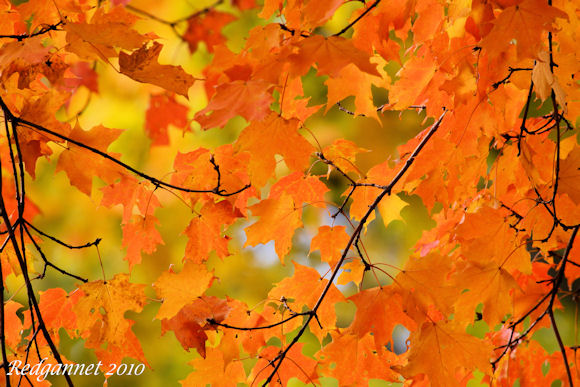
I had been specially selected for this operation.
“Redgannet? We need you.” (See?). The call had come in the early morning from ‘S’, the faceless, humourless head of the department that assigns agents to important missions.
“I promised to send our best man,” she said, “but he is already out on a job, so you will have to do.”
Thus, I found myself jetting to Boston.
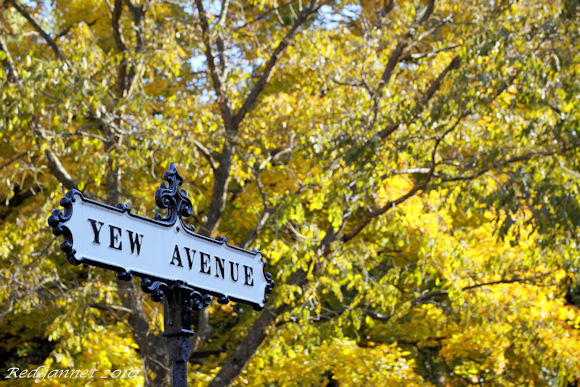
My mission objective was to reconnoitre the fall colours of New England and gather photographic evidence. ‘Q’, from the technical gismos unit had kitted me out with a fancy gadget that he called a circular polariser. A small disk of smoked glass, the polariser looked as if it could disable a hostile operative if deftly thrown.
“Do be careful with it Gannet,” he complained, “it enhances colours and reduces glare. Just the job for autumn leaves.”
Armed with the polariser screwed into the front of my standard issue lens, I left the hotel in Boston under the cover of darkness and arrived at the target site shortly after sunrise. The gates to Mt Auburn Cemetery caused me no problems. They were wide open and unguarded. Today, I had selected to wear subtle shades of brown rather than my customary disrupted green camouflage. I slipped through the gates and melted into the background.
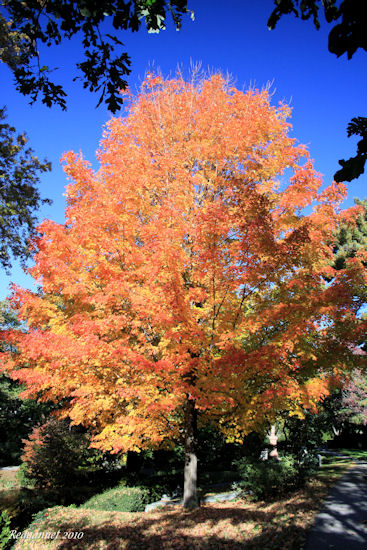
There can be few places close to the city more suited to this mission objective than Mt Auburn Cemetery. It contains 175 acres of beautifully sculpted parkland, lakes, scenic paths and huge mature trees. Chief amongst the trees in the last week of October is the Sugar Maple which takes on a vivid yellow, orange and red cloak. Red and White Oaks were just beginning to turn and will ensure that the spectacle continues into November. Cypress and hemlock will fill out the otherwise skeletal winter months. Larches cross the divide as deciduous conifers and a glorious Golden Larch tempted me to sit and enjoy for a brief spell.
Ground cover is scant, with much of the low level taken up with well-tended gravestones and monuments, but hedges and low bushes provided enough habitat to support sparrows and the slate-coloured form of Dark-eyed Junco. American Robins were noisy and conspicuous, but kept their distance. Their brick-red breasts looked splendid amongst the autumn colours of the trees. Blue Jays contrasted sharply and would have made a superb photograph. I found myself wishing that ‘Q’ had been able to get the big lens ready in time, but I was working in wide-angle today with emphasis on foliage and scenery rather than birds.
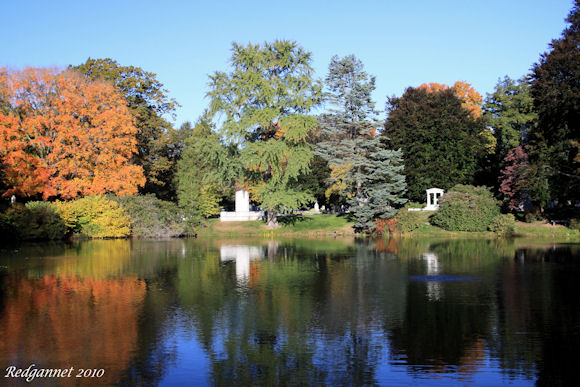
Halcyon Lake has its fair share of low, if manicured, habitat around the bank and looked stunning in the early light. Tufted Titmice and White-crowned Sparrows called from the bushes as I tried to do justice to the magnificent scene.
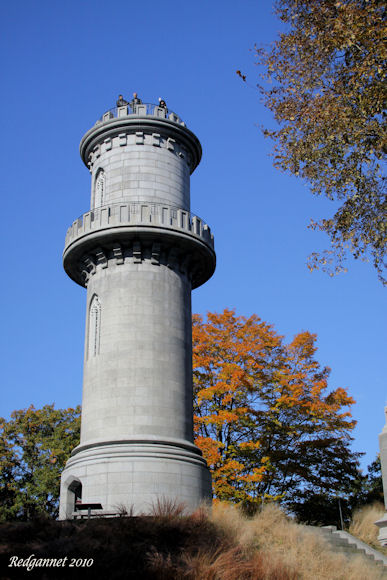
The brief for this assignment had made no mention of any inter-agency co-operation. My appointed New England contact was on a mission of his own this week, so who was the furtive-looking guy with the tripod-mounted, 500mm outfit? Could he be CIA (Canon Inspired American)? Perhaps he had some information. His codename was Phil and he was FBI (Flickr Based Informant). His valuable information set me on the way to the tower on the highest point around. From here, a 360° panorama took in the whole of the cemetery, Harvard and in the distance, the city of Boston.
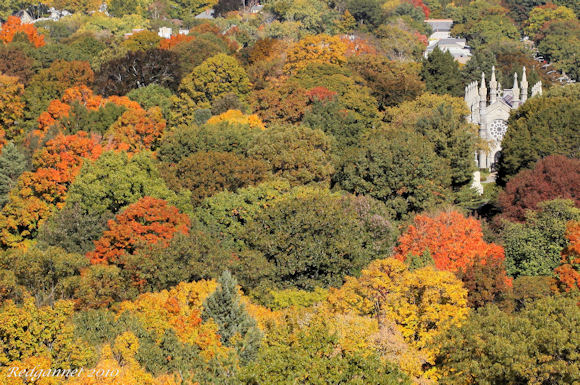
‘W’ who is in charge of feints, decoys and distractions had done a great job today in organising a huge regatta. Highlights reflected from the Charles River and the bridges were thronged with spectators. By contrast, the cemetery was dead quiet and the cover from the rowing event ensured that I could complete my reconnaissance without being disturbed.
I ran into Phil again later on and in the spirit of cross-agency cooperation, he lent me a trinket from the technical array in the trunk of his car; a Canon fixed 400mm f5.4 lens. His network of spies, in this instance his wife Jen, had news of a young Red-tailed Hawk near the entrance. Phil bundled me into the car and with wheels screeching and smoking, off we sped (not really. Although there are roads throughout the cemetery, drivers and visitors were all very respectful).
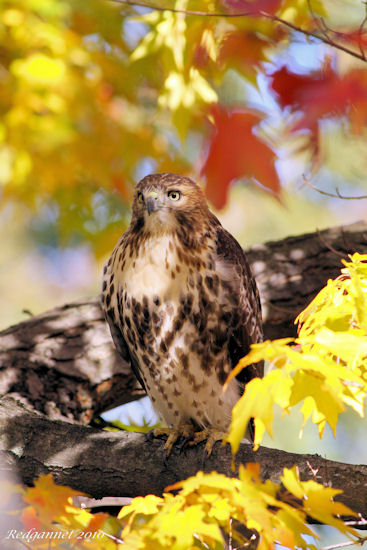
The hawk is the survivor of two that fledged from a nest within the cemetery. It was very approachable and drew quite a crowd. Phil, Jen and I moved on, passing the feeder at the end of Auburn Lake. Black-capped Chickadees and American Goldfinches were taking advantage of the free handouts here while, on the lake, a female Wood Duck tried to look inconspicuous amongst the Mallards. A White-breasted Nuthatch was feeding in a Cypress tree nearby (PS above the Redgannet credit indicates a bit of photoshopping beyond basic procedures such as cropping etc.).
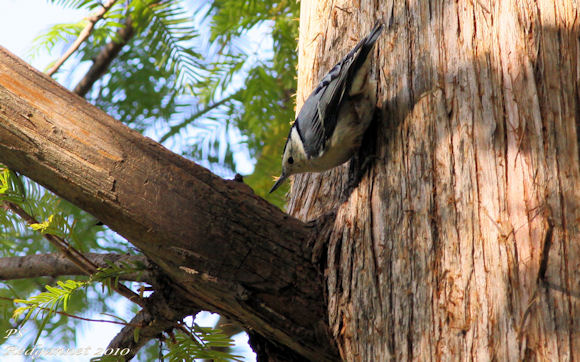
Ever vigilant and alert, a grizzly brown, low-slung creature dashing for cover, caught my eye. It was a Woodchuck, the first one that I had ever seen. It popped its head back out for a quick photo.
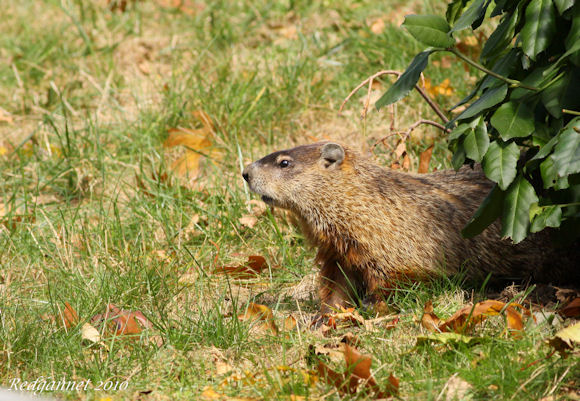
We arrived back at a rendevous point where all the informants go to share news. It was close to an evergreen bush which had been very productive of late. Blackpoll Warblers love the red berries from this bush and were showing well.
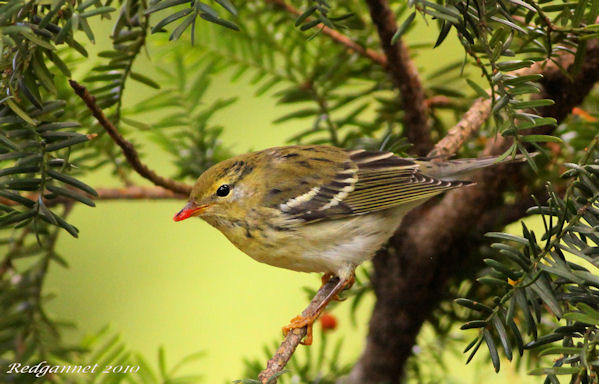
Other informants were gathering. Phil introduced me to John who writes a diary blog of the cemetery and its wildlife through the seasons. Al is a security guard there and is the designated spotter. He provides tip-offs of any interesting activity (of a natural bent) that he notices during his rounds.
Mt Auburn had shown me some of its treasures and I had made some very good contacts for my next visit. According to Phil, John and Al, there is plenty more to see as the seasons pass, so I am sure that I will be here again. All in all, it had been a good day.
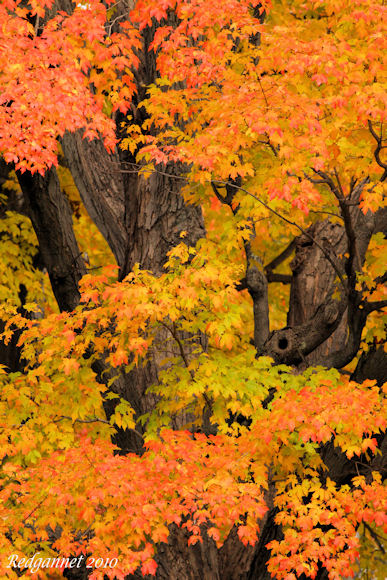
My mission was accomplished and I must acknowledge Phil’s contribution to its success. Without the assistance from his technical unit and the loan of his lens, this post would have been devoid of any close up pictures of birds, which would have been a terrible shame for a bird blog article. I hope that if Phil’s agency ever sends him on assignment to the UK, I will be able to repay his trust and generosity. He seemed to be very pleased to get photos of warblers that slobber and drool, so this one’s for you Phil. Thank you.
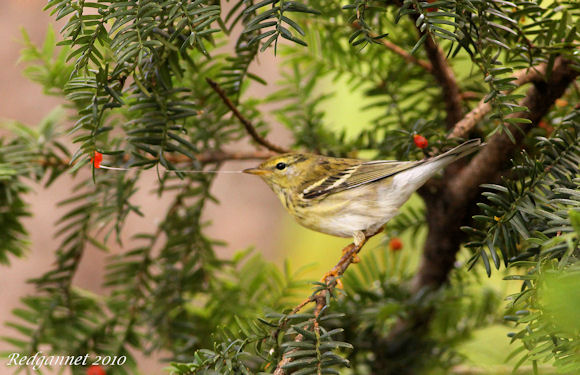
Some of Phil’s pictures can be seen on his Flickr page under the name of Dr_jones79
‘Q’ is on the case and working hard to ensure that the big lens is ready in time for the next mission. I don’t know where that will be yet, but that is half the fun of being an International Birder of Mystery.
Redgannet out.
For those readers who don’t have the benefit of ‘Autumn Watch’, the BBC programme that documents British wildlife through the ‘season of mists and mellow fruitfulness’, here is a taste of the kind of thing you are missing, though I am paraphrasing.
Leaves have a number of pigments that colour them, but they are over-powered by the abundance of chloropyhll during the spring and summer and thus appear green. As autumn approaches and the days shorten, the chlorophyll production slows from lack of light and the other pigments are given their moment in the sun, so to speak. Raised sugar levels stimulate anthocyanins to produce the red colours and carotenoid pigments in their turn give us yellow leaves. The yellow carotenoids can be over-powered by the red anthocyanins, but when they are present in similar quantities a leaf may show as orange.
Leaves are severed from the tree by means of a process called abcission. The nutrients in the leaves are reclaimed by the tree before special layers of cells in the abcission zone at the base of each stem, seal off the leaf and begin to disintegrate. (Suck ’em and shed ’em)
The leaf drop in autumn or fall is the tree’s chance to excrete waste. Toxins build up in the leaves and are excreted when the tree sheds them. Leaves therefore have 3 purposes beyond looking beautiful. They feed and water trees as well as being the agents for waste disposal. They are excretophores and have the ability to remove toxins from polluted ground.
Bird species; 17
Mallard 18, Wood Duck 1, Red-tailed Hawk 3, Cooper’s Hawk 1, Northern Flicker 1, Red-bellied Woodpecker 1, American Robin 80, Blue Jay 25, Tufted Titmouse 8, Black-capped Chickadee 20, White-breasted Nuthatch 2, Blackpoll Warbler 6, Yellow-rumped Warbler 2, White-crowned Sparrow 15, Song Sparrow 2, Dark-eyed Junco 10, Northern Cardinal 5.
Mammal species; 3
Grey Squirrel 20, Eastern Chipmunk 4, Woodchuck 1.













I love it. I now feel totally redundantified as a travelling bird blogger and will now fade back into the obscurity from whence I came, but I love it 🙂
Spectacular colors and composition, Thanks
I love it, too! It took me back to my childhood days of “Nancy Drew” – but with more sophistication, of course. 😀 Thanks for allowing me to feel I’ve been on a reconnaissance!
Leafers!
Duncan,
would that be a New Zealand term that translates in the UK as “barking?”
“A “leaf peeper”, or “leafer”, is the New England regional slang term for a person, usually a tourist, who drives very slowly throughout the north-east portion of the United States during autumn while looking out the windows of their car at the annual foliage color change. The act performed by leaf peepers is also known as leaf peeping. New England fall foliage is a major tourist attraction for the area, with vibrant red, yellow and orange colors appearing on the deciduous trees after the first snap frosts.
The term gained national attention on the Family Guy episode “Lethal Weapons”, where a bunch of obnoxious leafers, particularly from New York, invade the town. “
I must say I love the images, as well as the fact that we have a secret agent on the blog!
Also, having been born on Groundhog Day, I must say that is one fine specimen of a Woodchuck.
In my own backyard and I missed him – slipped in and out with barely a whisper yet managed to capture so much in so short a time.
Beautiful!!